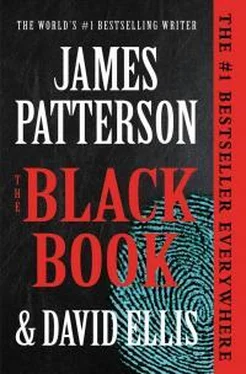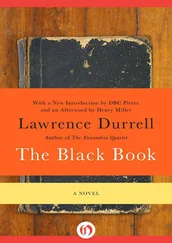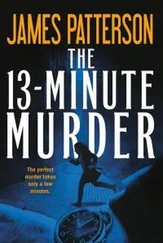And then she was inside!
She kept up the ruse with the fake phone call, laughing into the phone—“You’re kidding! She said that?”—in case anyone else was in the lobby.
But nobody else was. She was all alone. Her eyes scanned the spacious room. First she looked for security cameras—none. Shame on them, but good for her.
One wall was filled with locked mailboxes that looked like safe-deposit boxes at a bank. Some newspapers—the Tribune, the Sun-Times, and the Wall Street Journal —on the floor, wrapped in clear plastic.
A door to the left. Was it locked? Didn’t hurt to try, not as long as the lobby remained empty. It might lead to something good.
It wasn’t locked. And it led to something wonderful—a stairwell, the perfect way to get up to the sixth floor. Elevators were no good. There could be a security camera inside, and anyway it was cramped, confined, too easy to notice other people. The stairwell was far better. She picked up her suitcase by the handle—it was almost empty—and climbed the stairs.
She paused when she hit the sixth floor. Listened. Didn’t hear anything. Opened the door and stepped onto the cheap carpeting. A long corridor.
She oriented herself, realized that Amy’s apartment was right by the stairwell.
Picking the lock was the easiest part. A cheap pin-tumbler lock. A suspect she questioned once in a series of B and E’s who wanted her to like him—a lot of suspects did; she had no idea why they thought it would help—showed her how to pick a lock. She held her breath as she went to work and listened intently for any sounds. If someone came out of one of the other apartments on the sixth floor, she would have to put on her game face, quickly raise the phone to her ear again, pretend to be on a call, chat merrily, tell her nonexistent caller I can’t find my damn keys, and laugh. She would have to say and do things that wouldn’t arouse suspicion.
She was good at this. So good it scared her.
She worked in private, nobody emerging from any of the other apartments. Patti gently opened the door to Amy’s apartment and waited for the last hurdle—the possibility of an alarm.
No alarm. No sound when she entered. People in apartment buildings think their locked buzzer door on the ground floor is all the protection they need.
She closed the door behind her and felt relief swirl through her. She drew a long breath. Removed her winter gloves. Replaced them with rubber gloves.
Slipped out of her wet, slushy boots, too. They could leave footprints all over the apartment. Later, when it was time to leave, she would clean up the slush at the front door with paper towels and take the towels with her. She would leave no trace behind.
“Okay, Amy,” she said to the empty apartment. “Let’s get to work.”
Eighty
SHE WASN’T sure where to start. A sock drawer. A kitchen cabinet. On the nightstand. Under a pillow. In a medicine cabinet. Under a rug. It could be anywhere.
She started unconventionally, assuming it wouldn’t be anywhere obvious. She went through the bathroom cabinet and underneath the sink, feeling around the bottom, opening medicine bottles and jars of lotions. She looked under the bed and pulled back curtains. She quietly stomped her foot along the carpeting in the bedroom and on the hardwood in the main room, searching for false bottoms, secret compartments.
Nothing. She looked over at the small desk perched in the corner of the main room, a laptop resting on top along with some papers. A mini office in a cramped apartment. The obvious place. So obvious she didn’t start there. But now it was time.
She pulled open a drawer and removed some notepads, a passport, some letters and other documents, a magazine open to an article about Amy’s famed prosecution of the US senator in Wisconsin. Left inside the desk were a few pens and pencils and a small black thumb drive.
She picked up the thumb drive and stared at it, as if it could tell her anything by itself. It had no markings, no label.
Patti felt a tremble in her limbs as she removed her laptop computer from the suitcase she’d brought with her. She sat in the chair by Amy’s desk and carefully placed the thumb drive into the slot on the side of her laptop.
She held her breath as it booted up. A menu screen popped up, revealing the contents of the thumb drive. One document, in PDF format.
The title of the document was: LEDGER.
She felt a jolt of electricity sizzle through her as she clicked on the link and her laptop began its wrenching and tugging. The contents suddenly appeared on her screen.
“My God, this is it,” she whispered. “This is the little black book.”
Eighty-One
THERE HAD been various theories on what form it would take. Some people thought that Ramona Dillavou, the manager of the brownstone brothel, would steer clear of computers and simply write everything by hand on a pad of paper. Others figured she wouldn’t have been able to resist the simplicity and flexibility of a computer.
But everyone agreed on one thing: Ramona Dillavou would absolutely, positively keep some record of the transactions inside the brownstone brothel.
The computer screen gleamed on Patti’s face, the document lingering before her eyes like the Holy Grail. Hundreds of man-hours had been spent trying to find this document. Several lives had been lost.
It turned out that both theories were right—Ramona Dillavou had written down her entries in handwriting, on a pad of paper, but those pieces of paper had been scanned onto this thumb drive. Someone had made a copy.
There were more than forty pages of what looked like an accountant’s ledger, organized by dates that began nearly three years ago. On each line there were codes—letters followed by numbers followed by what appeared to be a dollar amount for services rendered: “BBB-14-5000”; “JJ-21-7500”; “Q-17-10000.” The entries went on for pages and pages. No names, just codes.
But at the end, after scrolling through nearly forty pages, she found the key to all the coded language. Each number referred to a different prostitute, her first name and last initial only. The number 14 was for a girl named Ava J. The number 21 referred to a Marnie B. In all, there were more than fifty prostitutes—Krista K., Courtney G., Leann L., and so on—who had worked at the brownstone brothel over the last three years.
Every letter was assigned to a client, his last name only, and once the alphabet was exhausted, the letters were doubled, then tripled. She found Archbishop Phelan under the letter K , which must have made him one of the earliest clients. RR was for Delaney—the now disgraced former Mayor Francis Delaney.
And YY was for Tedesco, which had to be none other than Congressman John Tedesco, the man who had just handed over the keys to the mayor’s office to Amy’s boss, Margaret Olson.
Patti read through the list of clients, some of whom had already been exposed by the flashy photographs that Kim Beans had published. But there were plenty more names, nearly a hundred in all.
When she got to the last of the client names, Patti paused. She was at page 40 of 42. There were two more pages to read. She wasn’t sure what was coming next, but she had a pretty good idea. Ramona Dillavou had obviously been very conscientious in recording all her other transactions, the clients coming in and out of the brownstone, paying in anonymous cash for their anonymous fantasies. Why wouldn’t she be just as diligent in recording the payouts she made to the cops to protect her illicit enterprise?
Patti took a breath and scrolled down to the next page. The heading of the page, in Ramona’s handwriting, said, Payments Out.
Yep. The payoffs. The bribes. Ramona recorded them, all right.
Читать дальше












